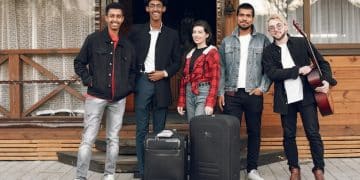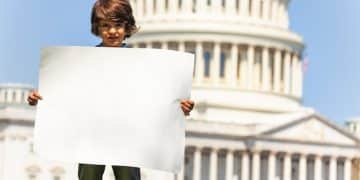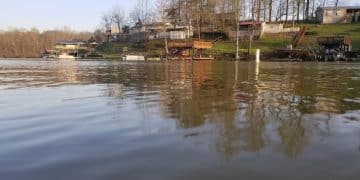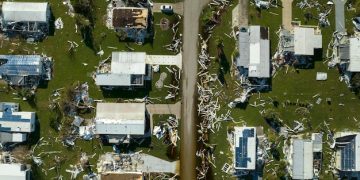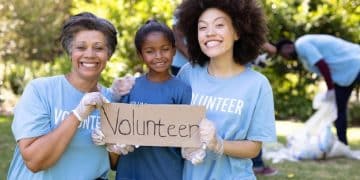How International Aid Organizations Combat Human Trafficking Globally & in the US
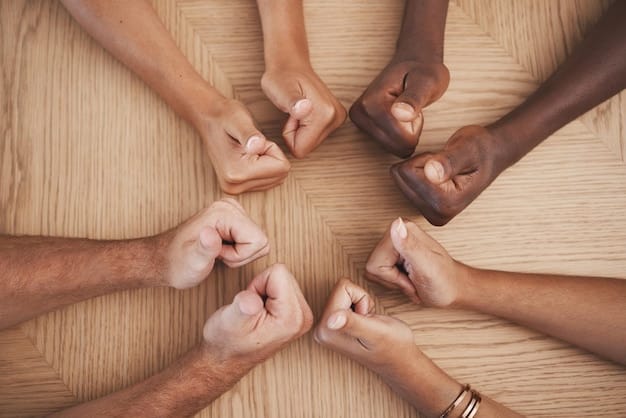
International aid organizations are fighting human trafficking through prevention programs, victim support, policy advocacy, and international collaboration, addressing both domestic and global dimensions of this complex crime.
How International Aid Organizations are Working to Combat Human Trafficking in the US and Abroad is a critical issue, and international aid organizations are at the forefront of this battle, employing various strategies to protect vulnerable populations and bring perpetrators to justice.
Understanding Human Trafficking and Its Global Impact
Human trafficking is a grave violation of human rights, involving the exploitation of individuals for forced labor, sexual exploitation, and other forms of servitude. Its global reach affects millions, demanding coordinated international efforts to combat it effectively.
The Definition and Scope of Human Trafficking
Human trafficking, as defined by the United Nations, involves the recruitment, transportation, transfer, harboring, or receipt of persons by means of threat or use of force or other forms of coercion, of abduction, of fraud, of deception, of the abuse of power or of a position of vulnerability or of the giving or receiving of payments or benefits to achieve the consent of a person having control over another person, for the purpose of exploitation. This exploitation includes, at a minimum, the exploitation of the prostitution of others or other forms of sexual exploitation, forced labor or services, slavery or practices similar to slavery, servitude or the removal of organs.
Global Statistics and Affected Populations
The International Labour Organization (ILO) estimates that there are approximately 40.3 million victims of human trafficking globally. Women and girls are disproportionately affected, accounting for 71% of trafficking victims. The most common forms of trafficking include forced labor, sexual exploitation, and domestic servitude. Certain populations, such as migrants, refugees, and those living in poverty, are particularly vulnerable.
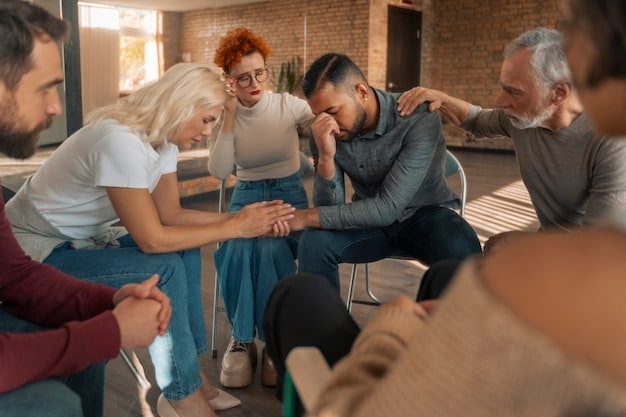
- Forced Labor: Millions are trapped in industries like agriculture, construction, and manufacturing, enduring inhumane conditions and little to no pay.
- Sexual Exploitation: Women and children are particularly vulnerable to sexual exploitation, often trafficked across borders for prostitution and other sex-related industries.
- Domestic Servitude: Victims are forced to work in private homes, enduring long hours, minimal pay, and often physical and emotional abuse.
Human trafficking is a complex and pervasive issue, requiring a comprehensive, multi-faceted approach involving governments, NGOs, and international organizations to address its root causes and protect vulnerable populations.
The Role of International Aid Organizations
International aid organizations play a crucial role in combating human trafficking through a variety of interventions, including prevention, protection, and prosecution efforts. These organizations work on the ground to support victims, raise awareness, and influence policy.
Prevention Strategies
Prevention is a critical component of combating human trafficking. International aid organizations implement programs aimed at reducing vulnerability and preventing trafficking before it occurs. They achieve this through education, economic empowerment, and awareness campaigns.
Education and Awareness Campaigns
Education initiatives target vulnerable communities, providing information about the risks of trafficking and how to identify and report potential cases. Awareness campaigns utilize various media platforms to disseminate messages about trafficking, aiming to change attitudes and behaviors. These campaigns often highlight the deceptive tactics used by traffickers and provide resources for those seeking help.
Economic Empowerment Programs
Economic empowerment programs aim to reduce vulnerability by providing individuals with sustainable livelihood opportunities. These programs include vocational training, micro-financing, and job placement assistance. By addressing economic inequalities, these initiatives help to prevent trafficking by providing alternatives to exploitative situations.
Protection and Victim Support
Protecting victims of human trafficking is a core function of international aid organizations. These organizations offer a range of services, including rescue and repatriation, safe housing, medical care, counseling, and legal assistance.
- Rescue and Repatriation: Organizations work to identify and rescue trafficking victims, providing them with safe passage back to their home communities.
- Safe Housing: Shelters and safe houses provide victims with secure and supportive environments where they can recover from their trauma.
- Medical and Psychological Care: Victims receive medical attention and counseling to address the physical and emotional scars of trafficking.
Advocacy and Policy Influence
International aid organizations advocate for stronger anti-trafficking laws and policies at both the national and international levels. They engage with governments and international bodies to promote effective measures to prevent trafficking, protect victims, and prosecute traffickers.
Lobbying for Stronger Legislation
Organizations lobby for the enactment and enforcement of comprehensive anti-trafficking laws that criminalize all forms of trafficking and provide for victim protection. They also advocate for laws that address the demand factors that drive trafficking, such as the demand for cheap labor and commercial sex.
Promoting International Cooperation
International cooperation is essential to combatting human trafficking effectively. Aid organizations promote collaboration among countries to share information, coordinate law enforcement efforts, and harmonize anti-trafficking policies. They also work with international bodies such as the United Nations to strengthen global anti-trafficking frameworks.
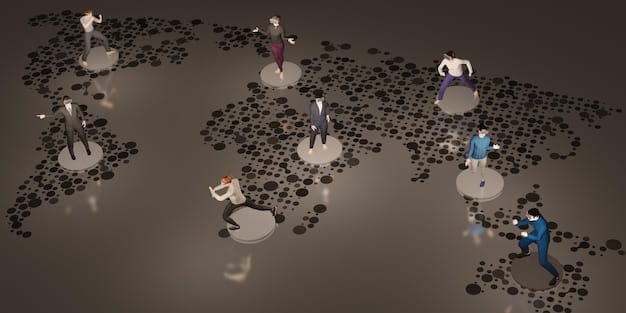
Supporting Law Enforcement and Prosecution
International aid organizations provide support to law enforcement agencies and prosecutors in investigating and prosecuting trafficking cases. This support includes training, technical assistance, and resources to enhance their capacity to address trafficking effectively.
These organizations play a crucial role in the global fight against human trafficking, working to prevent the crime, protect victims, and prosecute traffickers.
Specific Organizations and Their Initiatives
Several international aid organizations are dedicated to combating human trafficking, each with its unique approach and focus areas. These include the United Nations Office on Drugs and Crime (UNODC), the International Organization for Migration (IOM), and various NGOs.
The United Nations Office on Drugs and Crime (UNODC)
The UNODC works to assist Member States in implementing the Trafficking Protocol, a key international instrument in the fight against human trafficking. The UNODC provides technical assistance, research, and advocacy to support national and international efforts to combat trafficking.
- Research and Data Collection: UNODC collects and analyzes data on human trafficking trends, providing valuable information for policymakers and practitioners.
- Technical Assistance: UNODC provides technical assistance to countries to strengthen their legal frameworks, law enforcement capacity, and victim protection measures.
- Awareness Raising: UNODC conducts awareness-raising campaigns to educate the public about human trafficking and its impact.
The International Organization for Migration (IOM)
IOM provides direct assistance to trafficking victims, including rescue, repatriation, and reintegration services. IOM also works to prevent trafficking through information campaigns and capacity-building initiatives.
Assistance to Victims
IOM provides comprehensive assistance to trafficking victims, including medical care, counseling, and legal support. They also assist victims in returning to their home countries and reintegrating into their communities.
Prevention Through Awareness
IOM conducts awareness campaigns to educate vulnerable populations about the risks of trafficking and how to protect themselves. They also provide training to government officials and civil society organizations to enhance their capacity to address trafficking.
In conclusion, specific organizations like the UNODC and IOM spearhead various initiatives involving research, direct victim assistance, and preventative measures to combat human trafficking effectively.
Challenges and Future Directions
Despite the efforts of international aid organizations, significant challenges remain in combating human trafficking. These include the hidden nature of the crime, the involvement of organized crime networks, and the lack of resources and capacity in many countries.
Addressing the Root Causes
Addressing the root causes of human trafficking, such as poverty, inequality, and lack of education, is essential to preventing the crime. This requires a long-term, multi-faceted approach involving governments, civil society organizations, and the private sector.
Enhancing International Cooperation
Enhancing international cooperation is crucial to combating trafficking effectively. This includes sharing information, coordinating law enforcement efforts, and harmonizing anti-trafficking policies. It also requires addressing the demand factors that drive trafficking, such as the demand for cheap labor and commercial sex.
Leveraging Technology
Technology can play a significant role in combating human trafficking. This includes using data analytics to identify trafficking patterns, developing online platforms to report trafficking cases, and utilizing social media to raise awareness about trafficking.
Overcoming these challenges is crucial to ensuring the future success of anti-trafficking efforts worldwide.
The Impact of US Policies and Legislation
US policies and legislation play a significant role in shaping international efforts to combat human trafficking. The Trafficking Victims Protection Act (TVPA) of 2000 is a landmark piece of legislation that provides a comprehensive framework for combating trafficking both domestically and internationally.
The Trafficking Victims Protection Act (TVPA)
The TVPA establishes a three-pronged approach to combating trafficking, focusing on prevention, protection, and prosecution. It also provides for the creation of the Office to Monitor and Combat Trafficking in Persons within the US Department of State, which is responsible for coordinating US anti-trafficking efforts.
Annual Trafficking in Persons (TIP) Report
The TIP Report assesses countries’ efforts to combat human trafficking and ranks them accordingly. Countries are placed into one of four tiers based on their compliance with the TVPA’s minimum standards for the elimination of trafficking. The TIP Report serves as a tool to encourage countries to strengthen their anti-trafficking efforts and hold them accountable for their performance.
US Funding and Assistance
The US government provides significant funding and assistance to support anti-trafficking efforts around the world. This includes funding for prevention programs, victim assistance services, and law enforcement training. The US also works with international organizations and other countries to promote effective anti-trafficking strategies.
In summary, US policies and legislation, such as the TVPA, significantly influence international collaborations and funding towards anti-human trafficking initiatives globally.
| Key Element | Brief Description |
|---|---|
| ⚠️ Prevention Strategies | Education and economic empowerment to reduce vulnerability. |
| 🛡️ Victim Support | Rescue, safe housing, medical care, and legal assistance. |
| ⚖️ Policy Advocacy | Lobbying for stronger anti-trafficking laws. |
| 🌍 Global Impact | International cooperation and US policies are essential. |
Frequently Asked Questions
▼
Human trafficking involves exploiting individuals through force, fraud, or coercion for labor or sexual exploitation. It violates fundamental human rights and affects millions globally.
▼
They provide rescue, safe housing, medical care, counseling, and legal support. They also assist in repatriation and reintegration into their communities, fostering recovery.
▼
Strategies include education about trafficking risks, economic empowerment programs, and awareness campaigns that highlight deceptive tactics used by traffickers to lure victims.
▼
The Trafficking Victims Protection Act (TVPA) sets standards and provides funding to combat trafficking. The TIP Report also assesses countries’ efforts, influencing international collaborations.
▼
Key challenges include addressing the root causes like poverty, enhancing international cooperation, disrupting organized crime networks, and effectively leveraging technology to disrupt trafficking.
Conclusion
International aid organizations are pivotal in combating human trafficking globally and in the US. Through prevention, victim support, policy advocacy, and international cooperation, these organizations strive to protect vulnerable populations and bring traffickers to justice. The challenges are significant, but ongoing efforts offer hope for a future where human trafficking is eradicated.
